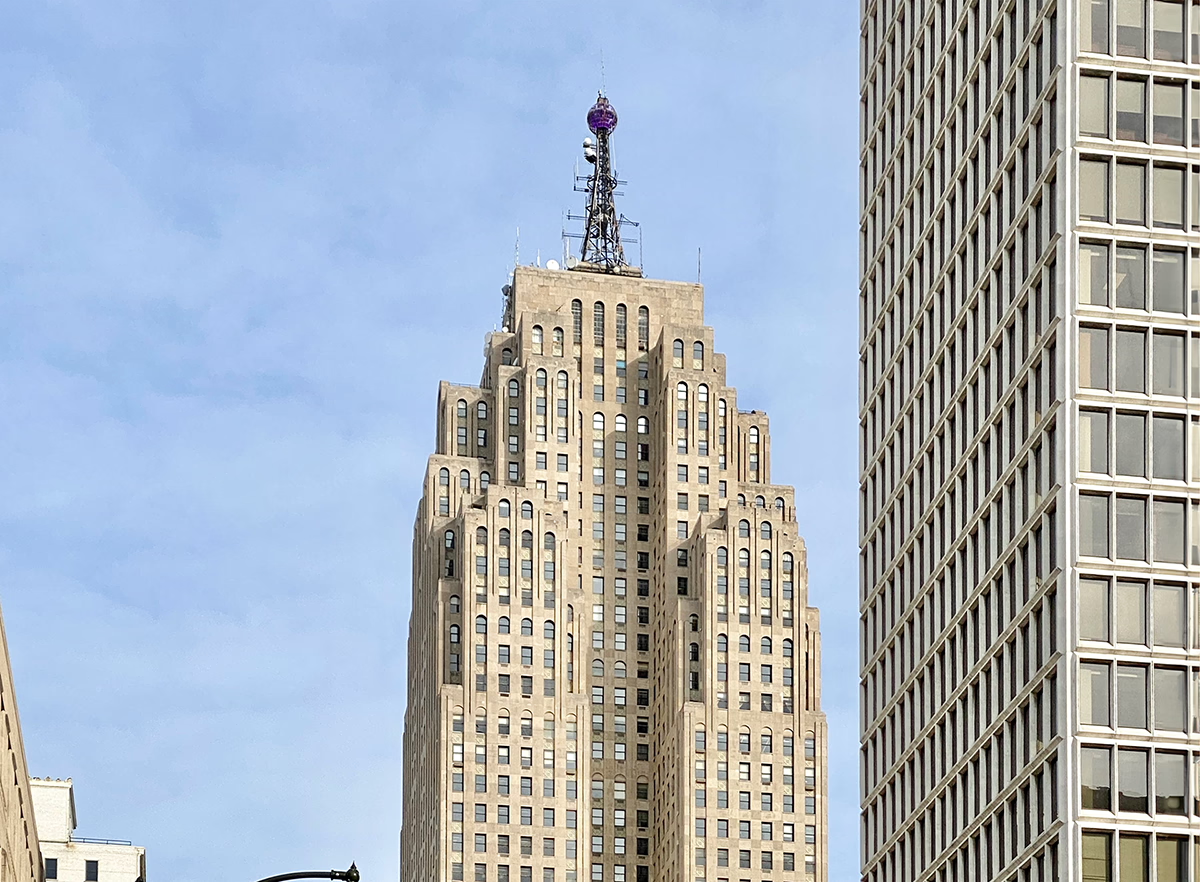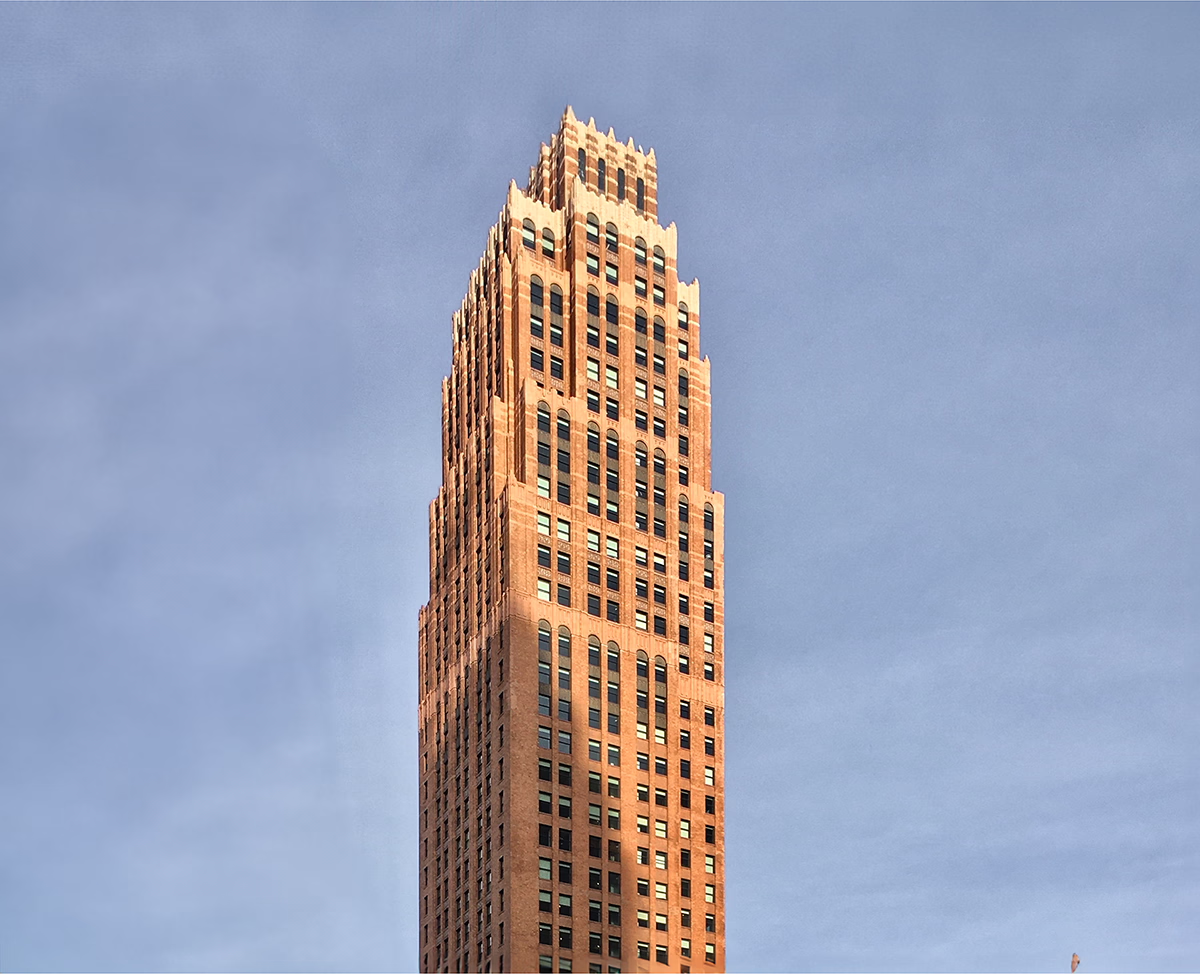Penobscot Building vs David Stott Building


Comparing the Penobscot Building and the David Stott Building is interesting because they both stand in Detroit, MI, and were completed just one year apart, but they were designed by different architects.
This offers a unique glimpse at how rival designers approached projects in the same city during the same era.
Height & Size
The Penobscot Building is clearly the larger tower of the two, both in terms of height and number of floors. It rises to 564ft (172m) with 45 floors above ground, while the David Stott Building reaches 436ft (133m) with 38 floors above ground.
Of course, each project may have faced different briefs or regulatory constraints, which we don't really know about and could also explain the outcome.
Architectural Style
Both the Penobscot Building and the David Stott Building were designed in line with the aesthetic conventions of the Art Deco style.
At the time, this style was at the height of its popularity. So both Smith, Hinchman & Grylls and Donaldson and Meier followed what was in many ways expected of them, producing designs that fit comfortably within contemporary architectural norms, rather than breaking with convention.
Uses
The Penobscot Building is primarily commercial, while the David Stott Building is primarily residential.
Originally, the David Stott Building was designed for commercial, but over time it was converted to residential. The Penobscot Building by contrast has maintained its original role.
The David Stott Building offers 107 residential units.
Structure & Facade
Both the Penobscot Building and the David Stott Building rely on a Frame structural system.
A frame structure uses a grid of columns and beams to carry the building's loads. This frees the walls from structural duties, allowing for flexible floor plans and larger windows.
They also employ the same type of facade, a Masonry facade.
A masonry facade gives the building a heavier, more traditional appearance. It often conceals a frame structure behind it, creating the look of solid walls without carrying the main loads.
| Penobscot Building | David Stott Building | |
|---|---|---|
| Smith, Hinchman & Grylls | Architect | Donaldson and Meier |
| 1927 | Construction Started | 1928 |
| 1928 | Year Completed | 1929 |
| Art Deco | Architectural Style | Art Deco |
| Commercial | Current Use | Residential |
| 45 | Floors Above Ground | 38 |
| 2 | Floors Below Ground | 3 |
| 159 | Last Floor Height | 132 |
| 172 m | Height (m) | 133 m |
| 202 | Tip Height | 138 |
| 116,960 m² | Usable Area (m²) | 18,784 m² |
| 25 | Number of Elevators | 6 |
| Frame | Structure Type | Frame |
| Steel | Vertical Structure Material | Steel |
| Concrete | Horizontal Structure Material | Concrete |
| No | Facade Structural? | No |
| Limestone | Main Facade Material | Bricks |
| Murphy Company | Developer | Stott Realty Company |
| Corrado Parducci | Collaborating Artist | Corrado Parducci |
| MI | State | MI |
| Detroit | City | Detroit |
| 645 Griswold Street | Address | 1150 Griswold Street |